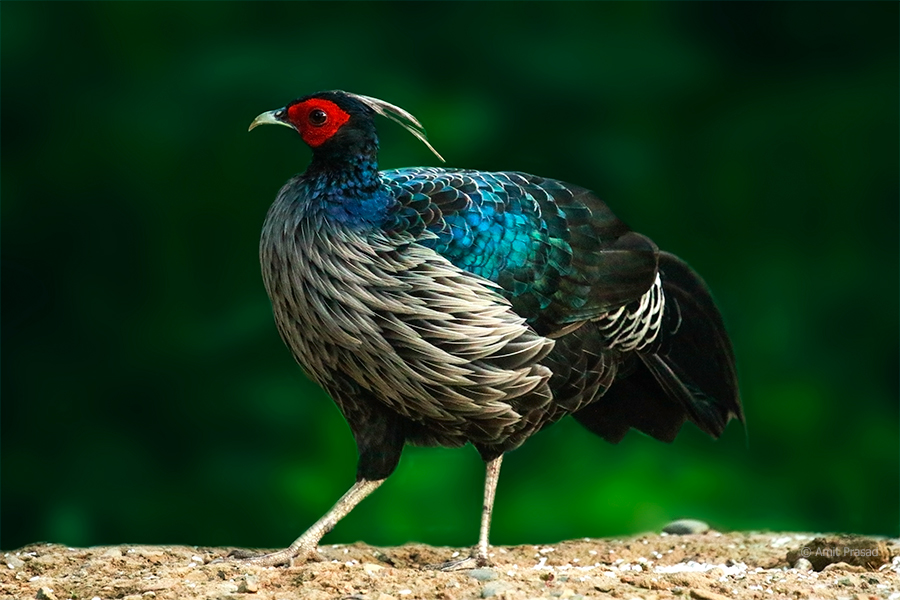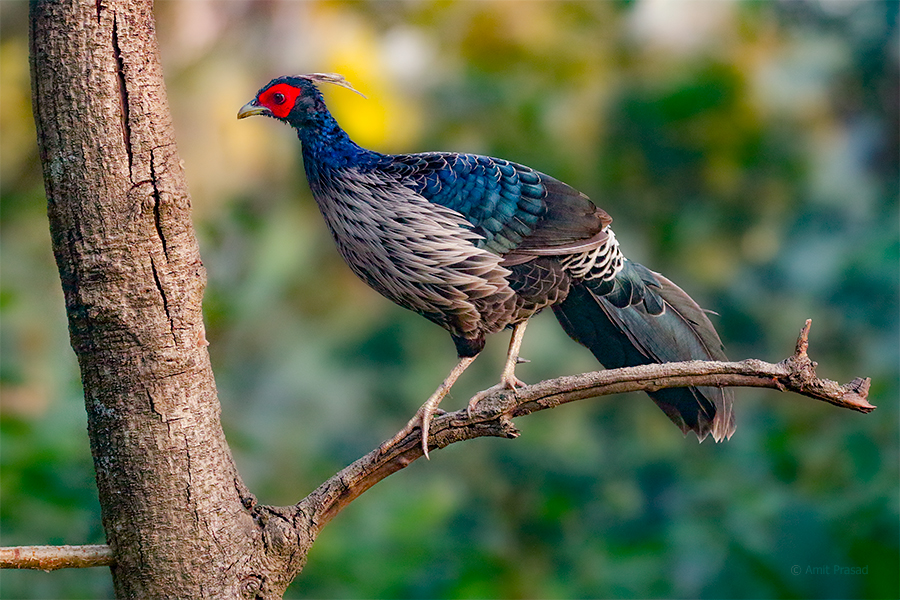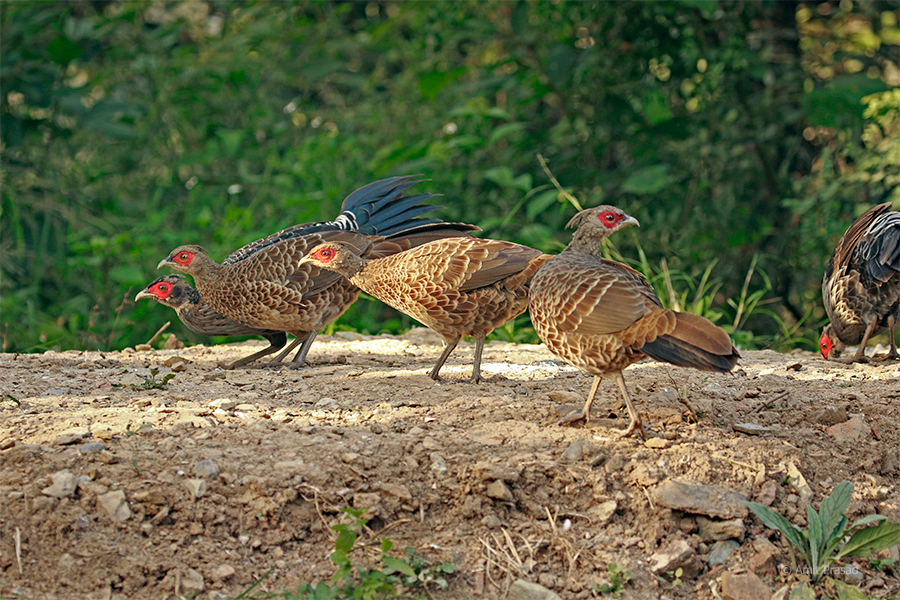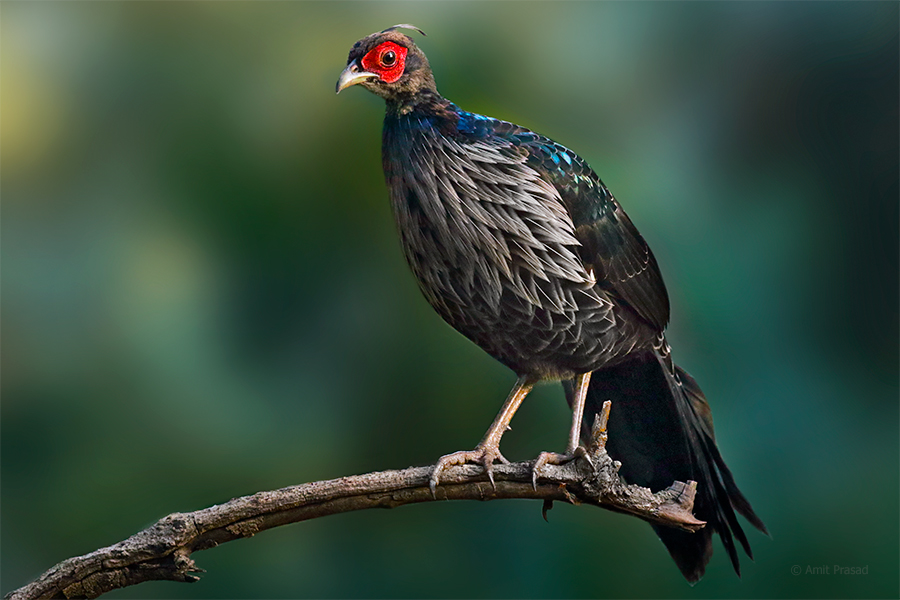Locally widespread over much of its range, this incredibly variegated species is most easily spotted in a select few locations, particularly in Uttarakhand at Sattal, Nainital, and Corbett National Park. The Godawari Forest in Nepal, the mountains of West Bengal (Mahananda Wildlife Sanctuary and Singalila and Neora Valley National Parks), Chelela in Bhutan, Manas and Kaziranga National Parks in Assam, the Hongbenghe region of western Yunnan, and Mae Wong and Kaeng Krachan National Parks in western Thailand are other locations where it is typically found. On Hawaii’s Big Island, where it was first introduced and is now well-established, it can be found primarily in Hawaii Volcanoes National Park, on the southeast slopes of Mauna Kea, and in the hills north of Kailua-Kona. On Oahu, the western slopes, which include Nanakuli Forest Reserve, appear to have a small population already developed. The Government of Jammu and Kashmir designated the Kalij Pheasant as the official bird of the Union Territory of Jammu and Kashmir on October 21, 2021.

The nine recognised subspecies that make up the taxonomically complicated Kalij Pheasant’s several races, each of which has a distinct look but occasionally overlaps, allow for unrestricted interbreeding. The Kalij and Silver Pheasant races that live in close proximity to one another occasionally interbreed and resemble one another more than either of them resembles distant races of their own species, which furthers the complexity of the situation. The Silver Pheasant also exhibits a similar degree of variation. Genetic analyses of relatedness that clearly show the validity of the distinction and the position of the dividing line between them are the basis for the present classification of these intermediate races and the splitting of all Kalij-Silver races into two species.
The southern Himalayan slopes and valleys from northern Pakistan east to northern Myanmar and southern China, as well as the majority of Myanmar and nearby regions of India, Bangladesh, China, and Thailand, are where the Kalij Pheasant can be found. On Hawaii’s Big Island, a western race introduced population is firmly established, but Oahu’s

Identification
A pheasant with a wide tail feather that resembles a fan and vivid red facial skin. Male is substantial (approximately 80 cm length, with a 30 cm tail) (up to 1 kg). The female is less than half as bulky and about three-quarters as long as the male.
Males vary so much that they defy most generalisations, with the exception of the fact that their tail feathers are broad and proportionately short, and their plumage is a mix of black and white—typically with a blue gloss noticeable on some of the black feathers (relative to other pheasants).


There are three main forms that can roughly be summarised as follows: (1) “Typical” from Pakistan to Nepal and introduced to Hawaii; (2) “Black” from eastern Nepal to Myanmar and southern China; and (3) “Silver” in western Thailand and southern Myanmar. Each form has a wide range of variations and gradations. Some populations also exhibit substantial internal variance.
A white or grey topknot and varying amounts of elongated white or grey feathers on the throat and breast, as well as a white or bluish gloss on the neck, back, wing coverts, and tail, are all characteristics of “typical” males. They are also black with a bluish gloss on the neck, back, wing coverts, and tail.
“Black” males have almost entirely black plumage, including the topknot, with varying amounts of white or grey streaking on the neck, white scaling on the back and rump, and occasionally white or grey in the tail. These males are mostly found in eastern Nepal, Myanmar, and southern China.
Male “silver” birds have jet-black underparts, predominantly white or light grey upperparts and tails that are irregularly covered in fine black vermiculations, and a black topknot. These birds are mostly found in eastern Myanmar and western Thailand.
They were earlier categorised as races of the Silver Pheasant species because they resemble several races of that bird, but their new classification is mostly based on genetic research. While most Kalij Pheasants have pale-gray legs, certain individuals have pink legs like Silver Pheasants do.
While still very varied, females are a little less so than males.
The majority of the body of “Black” and “Typical” race women is covered in tan scaling. The main brown colour has a wide range of tones, ranging from blackish to pale at the extremes.
The brown on any given individual is often paler and frequently grayer on the head, neck, chest, and back. It gets gradually darker toward the tail and is the darkest on the outer tail feathers, which frequently have a blue gloss.
The head, neck, and underparts of females of the “Silver” races are usually medium-brown, and they have a pattern of black-and-white chevrons and streaks on them. Some of the wing and tail feathers are brown, while others have distinct black and white bars running through them. Usually, if not always, their legs are pink as opposed to gray.
The general coloration of immature males is similar to that of females, but they lack any of the distinctive patterns of the latter.
Author: Saurav Chauhan – Nature and Wildlife Enthusiast
